6 Home Projects That Save Energy and Money
The average American homeowner pays about $2,300 a year in utility bills, according to the U.S.
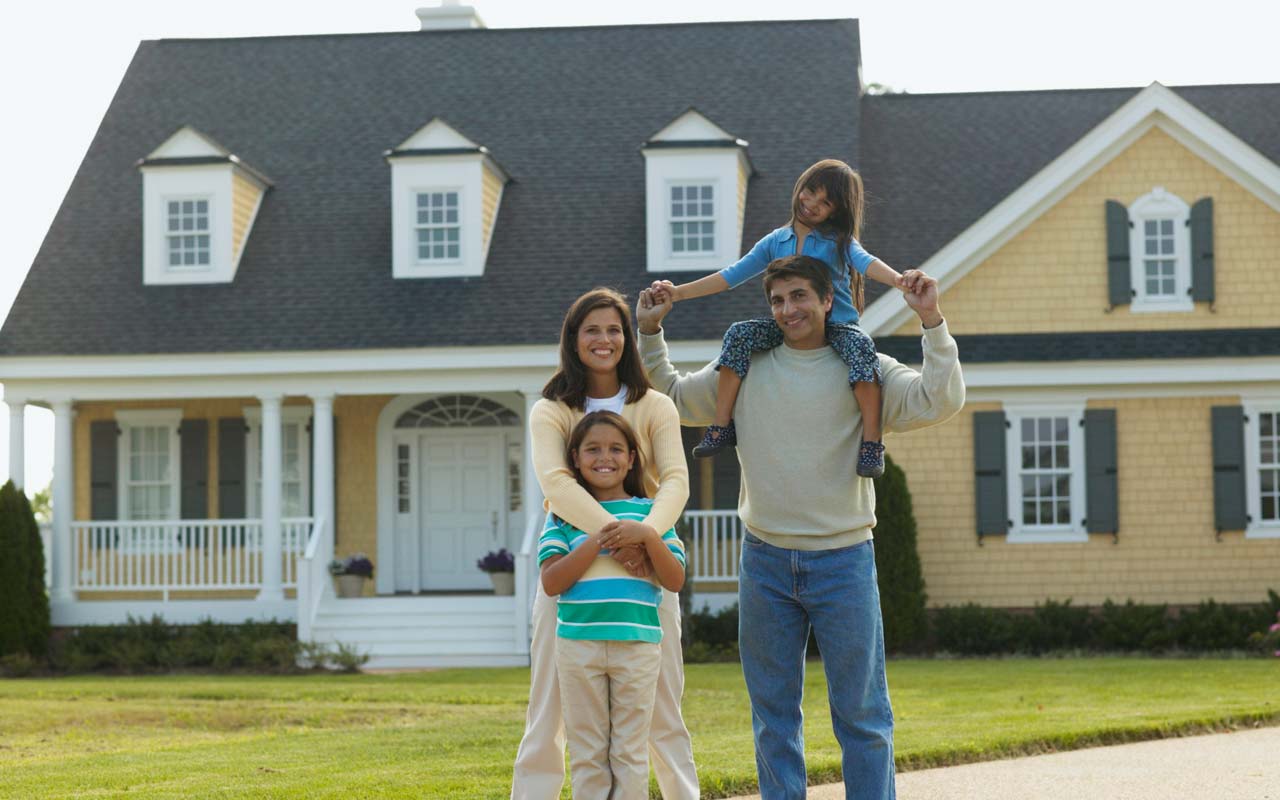

The average American homeowner pays about $2,300 a year in utility bills, according to the U.S. Energy Information Administration. Almost half of the energy we use goes to heat and cool our homes, and more than one-third goes to keeping the lights on and running our appliances and electronics.
The six projects featured here will help trim the bills, and three of them qualify for the generous renewable-energy federal tax credit if they're completed before year-end 2016.
The cost, savings and payback period will vary depending on your climate, your home (its size, age, construction and condition) and the type of fuel you use. To help decide which projects are right for your home, consider getting an energy audit.
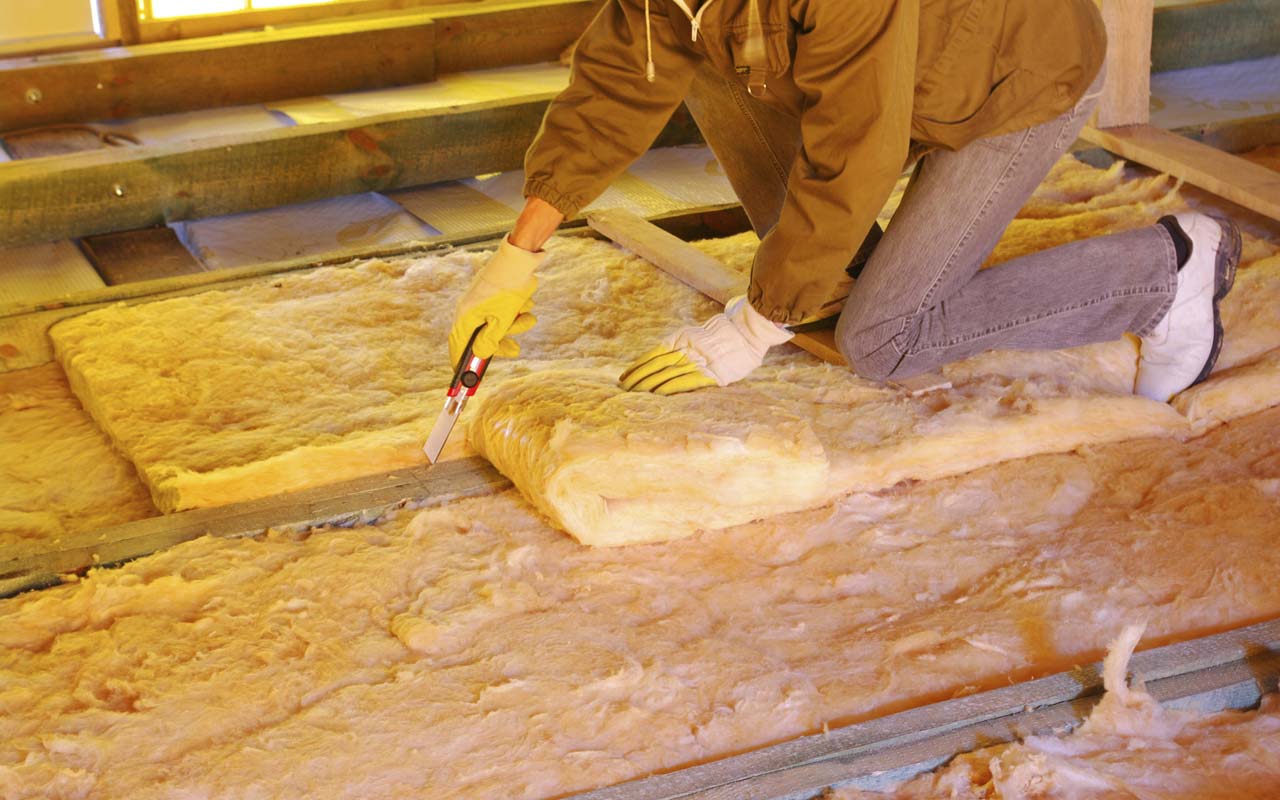
Seal the Exterior and Add Insulation
- Cost: $1,700 to $7,000 for a 2,500-square-foot home
- Savings: The typical single-family home can cut heating and cooling bills by 15% to 35%, or about $165 to $390 in the first year (savings will increase as energy prices rise). The colder your climate, the greater your savings. Plus, when you replace your heating, ventilating and air-conditioning (HVAC) system, you may get by with smaller, less-expensive units.
- Details: The exteriors of most U.S. homes are so leaky and poorly insulated that you might as well be leaving a window open year-round. Symptoms? You shiver with drafts or have a room that’s never warm or cool enough. In winter, your pipes are liable to freeze or ice dams form on the roof.
- Who to hire: Look for contractors who are certified by the Air Conditioning Contractors of America, Efficiency First, the Building Performance Institute, Energy Star or the Residential Energy Services Network.
- Tip: If your well-sealed house needs more fresh air, you can add mechanical ventilation.
The first step, which is easy to do yourself, is to weather-strip and caulk doors and windows, add or replace door sweeps, and adjust or replace locks on window sashes to close any gaps.
The remaining work is best left to the pros. Their first priority will be the attic, where heat escapes, and then the basement, where convection draws cold air. Contractors will find and seal holes and gaps in your home’s exterior and add insulation, which works best when air isn’t moving through or around it. They will also check your ductwork to ensure that it’s straight (bends diminish airflow), sealed and insulated.
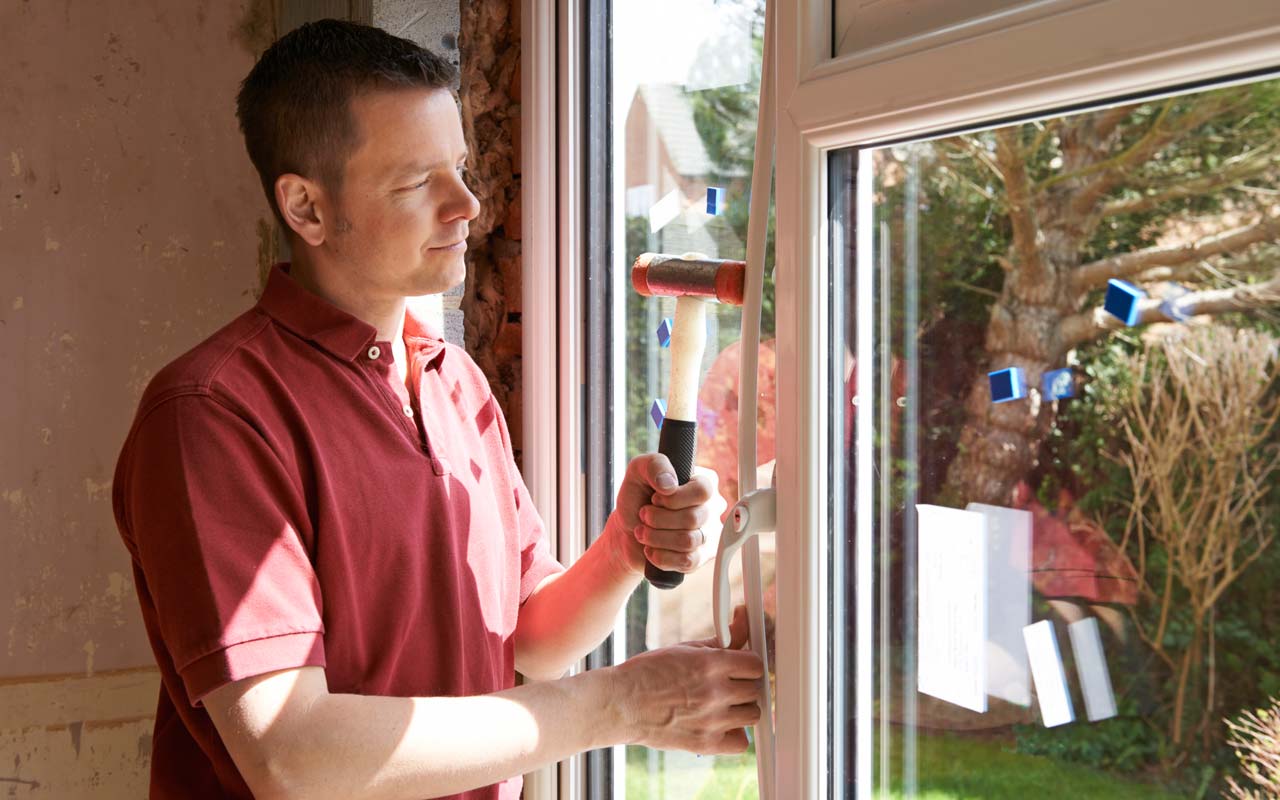
Replace Old Windows
- Cost: $300 to $1,000 apiece for Energy Star–qualified replacement windows (50% to 100% more if you must replace the frame)
- Savings: Replacing 10 windows in a typical home would save about $135 in the first year on heating and cooling bills.
- Details: You’ll save the most if you’re replacing single-pane windows. But you’ll also benefit if your home has newer but cheap, builder-grade windows. Clues to a problem: The window glass inside feels cold in winter and hot in summer, plus windows are cloudy with condensation, and they don’t open easily or close tightly.
- Who to hire: Look for window installers certified by the American Window and Door Institute or Installation Masters.
- Tip: If your front door is old, warped and has single-pane windows, replace it with an Energy Star model (about $400 to $3,000, including installation).
Energy Star certifies windows for four climate tiers in the U.S., depending on how well the windows insulate and block heat caused by sunlight. Energy-efficient windows feature at least two panes of glass separated by spacers and filled with air or, better, argon. “Low-E” coatings reflect infrared light, keeping heat inside in winter and outside in summer. Triple-pane windows are more expensive but are most cost-effective in extreme climates. Elsewhere, you may want them to help reduce noise.
If your window frames are in good shape, you can replace just the sashes. If not, you need to replace the frames, too.
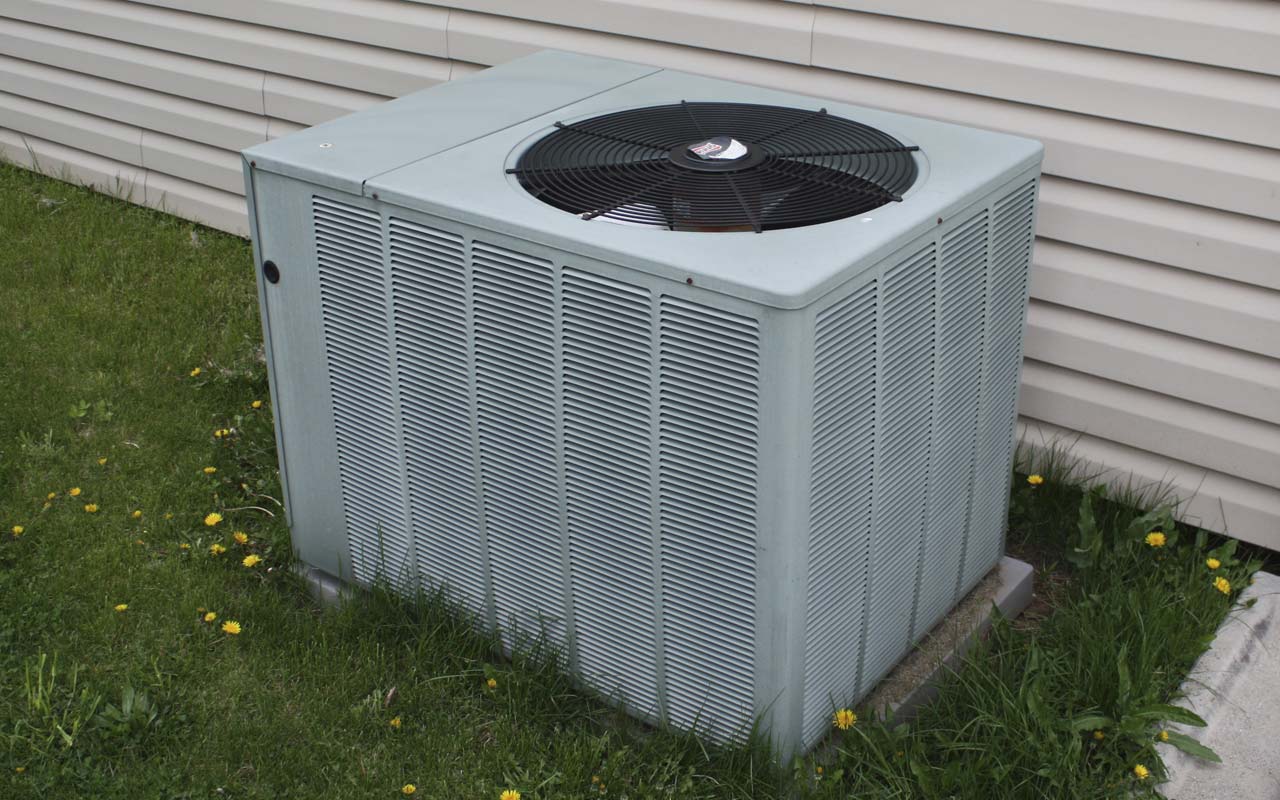
Heating and Cooling for Less
- Cost: $5,000 to $10,000, per CostHelper.com
- Savings: Typical savings on heating and cooling bills: about $400 in the first year.
- Details: If your furnace or boiler is at least 15 years old or your central air-conditioning is at least 10 years old, upgrading to an Energy Star–qualified HVAC system is worthwhile. A new, high-efficiency system can be up to 40% more efficient than an older system. (If your furnace has a pilot light, you’re likely wasting about one-third of the fuel you use.) Even in a newer home, you may have noticed that your HVAC system fails to heat, cool or dehumidify your home consistently; it requires more frequent repairs; or your energy bills are rising.
- Who to hire: Look for members of the ACCA who employ technicians certified by North American Technician Excellence (NATE) and adhere to the ACCA's "Quality Installation Specification." Use ACCA's "Residential Quality HVAC Installation" worksheet to compare bids.
- Tip: You can increase cost savings by about 10% with a programmable thermostat.
When the air-conditioning system uses the furnace’s blower to move cooled air through your home, replace both units simultaneously. That will decrease your total cost by about one-third compared with staggered installation. If you have a split AC system, with an outdoor and an indoor unit, you must replace both units to optimize efficiency.
If you live in a warm or moderate climate, an air-source heat pump ($2,000 to $8,000) can efficiently heat, cool and dehumidify your home. If you’re heating with electricity, it will cut your electric bill by 30% to 40%. However, when outdoor air temperatures fall to 40 degrees F or lower, air-source heat pumps generally don’t perform well.
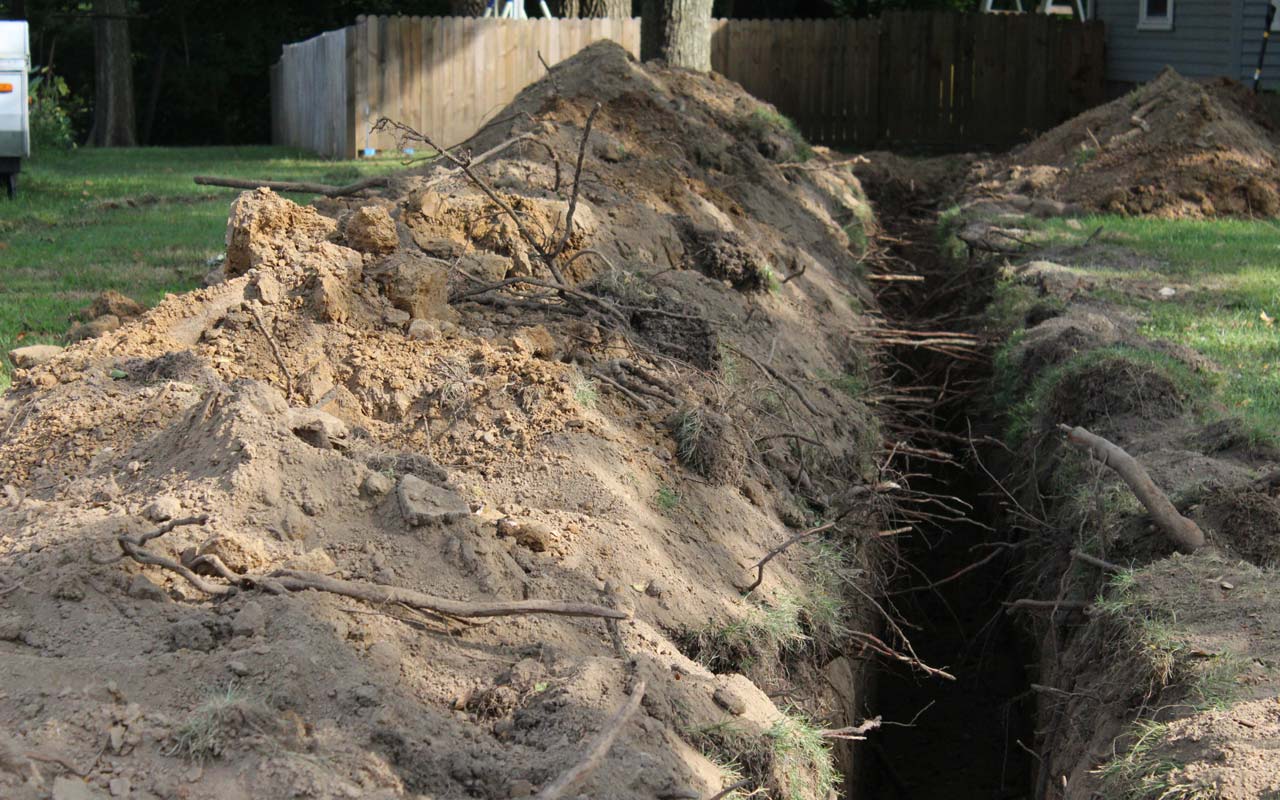
Install a Geothermal System for Heating and Cooling
- Cost: A ground-source heat pump costs $3,500 to $7,500, but installation can increase the total cost to $10,000 to $25,000 or more. A 30% renewable-energy tax credit will help offset the cost.
- Savings: $760 to $1,230 in the first year, based on an increase in your heating system’s efficiency by 50% to 70% and your air-conditioning system’s efficiency by 20% to 40%.
- Details: A geothermal system taps solar energy stored below ground, where the temperature is relatively constant. High-density, polyethylene pipes are buried in your yard and filled with fluid. The heat pump circulates the solution and transfers heat to the house in winter and carries heat away from the house to the ground in summer. In areas with severe winters, you may need a back-up source of heat, usually your existing furnace.
- Who to hire: Look for contractors who are trained and accredited by the International Ground Source Heat Pump Association.
- Tip: You can upgrade the system to channel heat to your hot-water heater and pay about half the usual cost of gas- or electric-fueled water heating in winter and nothing in summer.
Horizontal systems, with pipes laid about 4 feet to 6 feet deep in trenches, require the most land but are the most economical to install. Vertical systems, with pipes inserted into holes drilled from 100 feet to 400 feet deep, are more expensive but are used if space is limited or bedrock underlies a shallow layer of soil. The pipes are generally warrantied for 50 years, although they may last longer, and the heat pump for five to 10 years, although it can last up to 25 years.
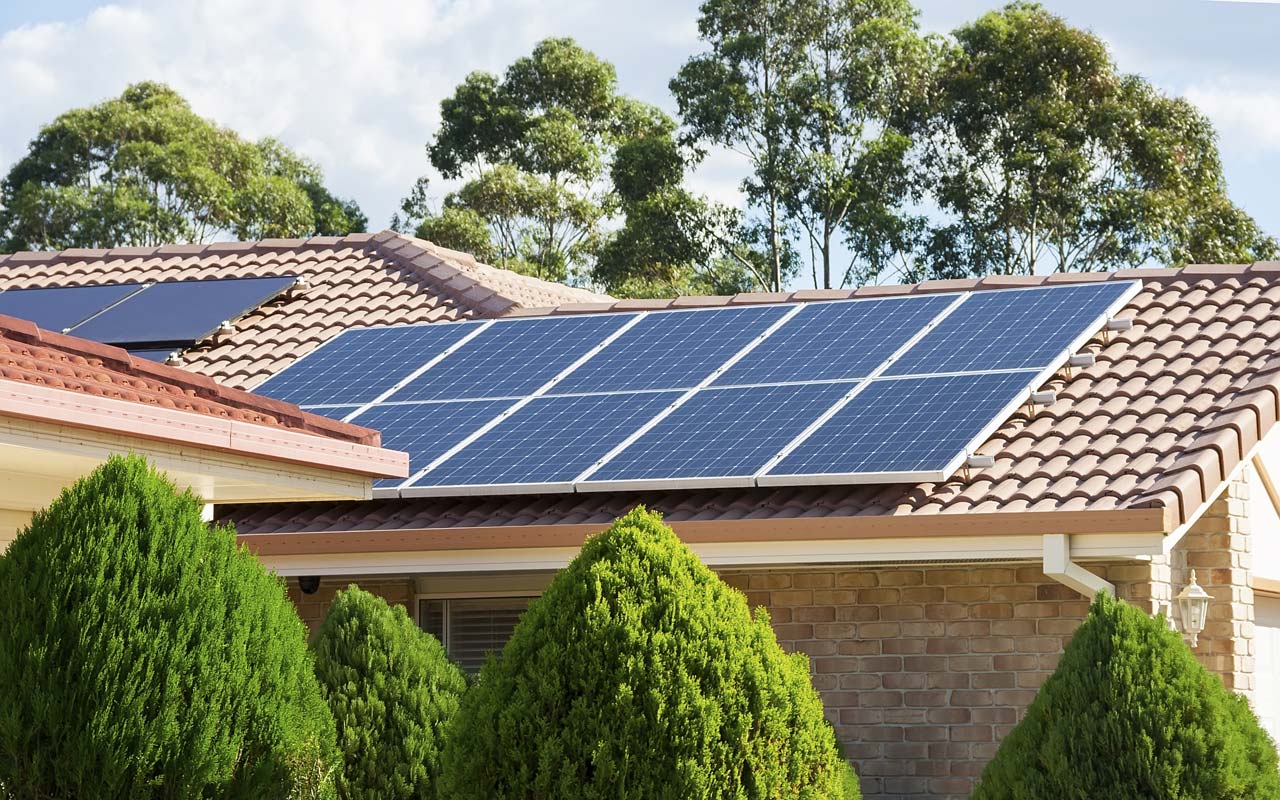
Install a Solar-Power System
- Cost: The typical home system has 6 kilowatts of generating capacity, which costs about $21,400 to install before any financial incentives and the 30% federal tax credit.
- Savings: You can offset up to 100% of your annual electric bill; for a typical home with air-conditioning and an electric water heater, that’s $1,360.
- Details: The higher the electric rate you pay, the more sunshine your roof receives and the greater the financial incentives available to you, the better the return on a solar system.
- Who to hire: Attend energy expos and home-and-garden shows to find installers, or contact your local chapter of the American Solar Energy Society for referrals. The best installers are certified as photovoltaic installation professionals by the North American Board of Certified Energy Practitioners.
- Tip: To get apples-to-apples comparisons of proposals for your home from local installers, go to www.energysage.com.
A system consists of photovoltaic panels, usually mounted on the roof of your home, and an inverter that converts the direct current that the panels produce into the alternating current that feeds into your home’s electric service panel. Solar power systems are usually connected to the electric grid for backup power. In most states, you can sell electricity back to the grid when your system makes more than you need. You’ll almost certainly continue to pay your utility a small fee each month for connection and infrastructure.
If you pay up front, you’ll enjoy 100% of the savings after you recoup the cost of the system. If you lease a system, you’ll have a monthly payment, but you’ll still see 20% to 30% savings on your utility bill. See our story Money-Smart Reasons to Install Solar Panels at Your Home Now.
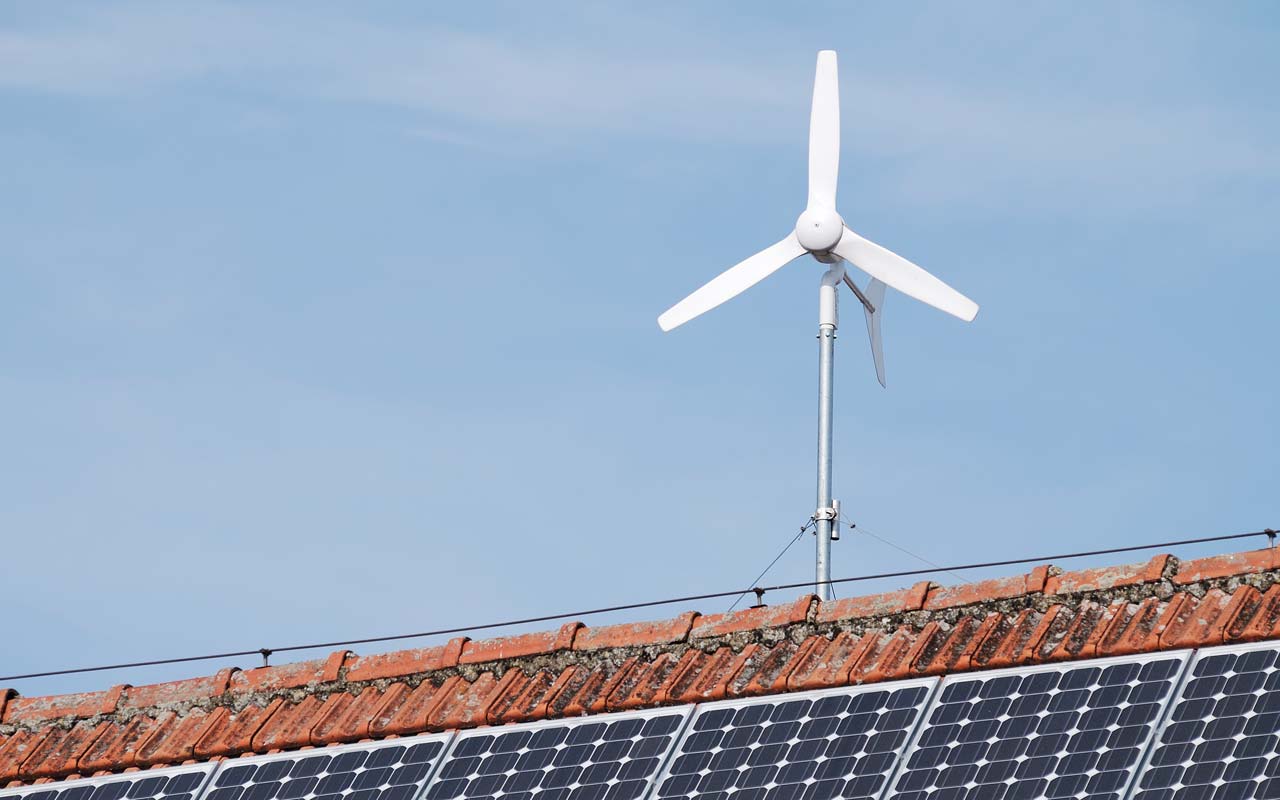
Create Electricity With a Turbine
- Cost: A turbine with a capacity of 10 kilowatts, sufficient to supply a 2,500-square-foot house using about 2,000 kilowatts of electricity per month, will cost $65,000 to $70,000 before incentives (including a 30% federal tax credit).
- Savings: You can offset 50% to 100% of your annual electric bill with a small wind turbine, for a typical savings of $680 to $1,360.
- Details: Wind turns the fan blades on a turbine’s rotor, which spins a shaft connected to a generator, which generates electricity. The turbine is mounted on a tower on a concrete pad. Wiring and an inverter to convert direct current to alternating current complete the system.
- Who to hire: Attend energy expos and home-and-garden shows to find installers, or contact your local chapter of the American Solar Energy Society for referrals. The best installers are certified as photovoltaic installation professionals by the North American Board of Certified Energy Practitioners.
- Tip: To get apples-to-apples comparisons of proposals for your home from local installers, go to www.energysage.com.
For a small wind turbine to make economic sense, the wind in your area must blow at an annual average speed of at least 10 miles per hour (see the U.S. Department of Energy's WINDExchange Residential-Scale Wind Maps and Data page) and your electricity must cost at least 12 cents per kilowatt-hour, which is just under the national average. Small wind turbines are best suited for exurban or rural properties of at least one to two acres, says Mike Bergey, president of Bergey Windpower, a manufacturer of small wind turbines in Norman, Okla. The structure should be at least 200 feet from the nearest house and a distance equivalent to the tower’s height from property lines.
The higher the tower, the more electricity the system will produce. The rotor and blades must be higher than any surrounding obstacles. Check your local zoning ordinances, which often limit the height of structures to 35 feet.
Bergey says his company’s customers commonly receive bills from their electric provider only in summer, the least windy season. If the system is connected to the grid, you can sell back excess production.
Get Kiplinger Today newsletter — free
Profit and prosper with the best of Kiplinger's advice on investing, taxes, retirement, personal finance and much more. Delivered daily. Enter your email in the box and click Sign Me Up.

-
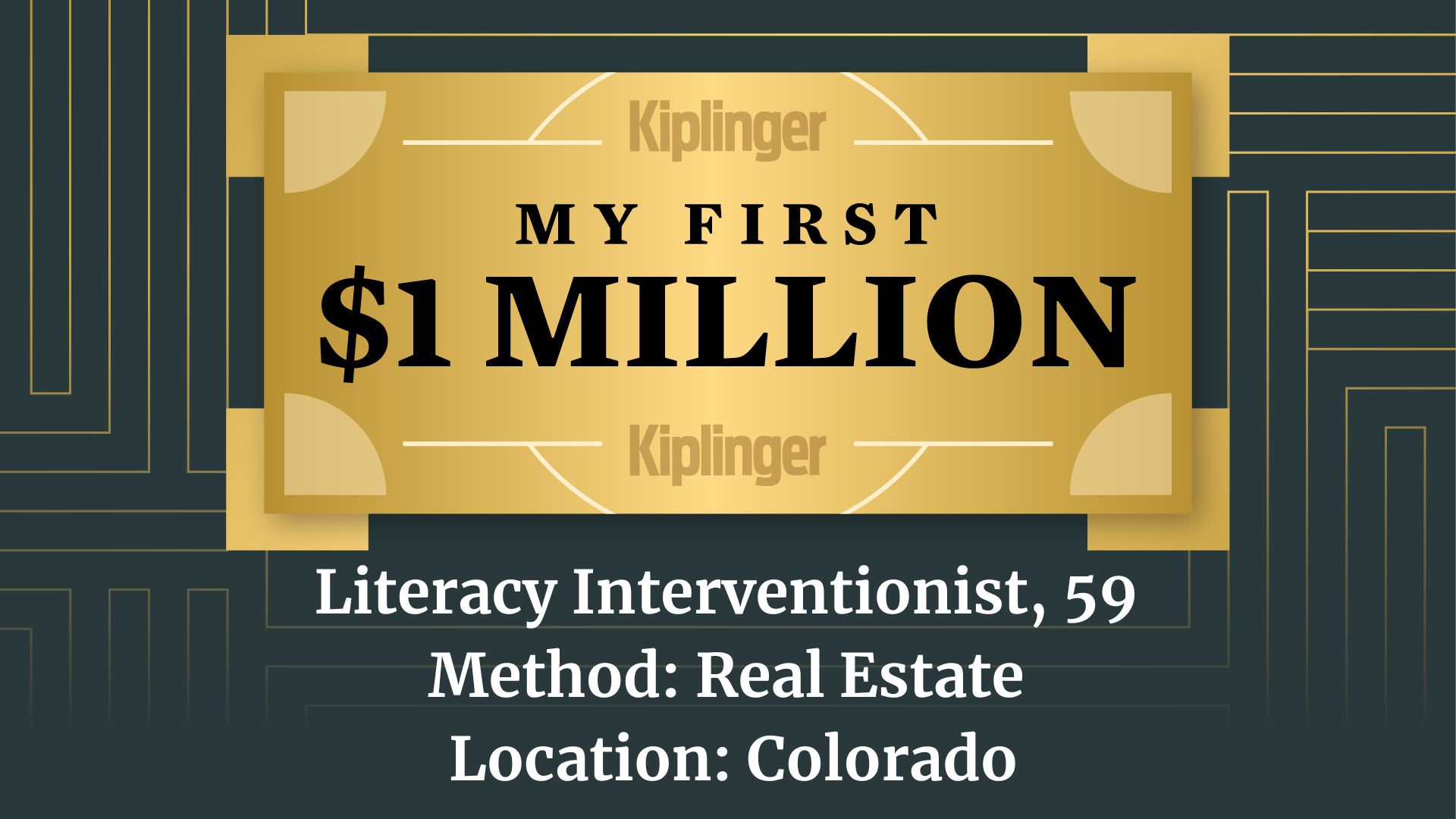 How This Literacy Interventionist Made $1 Million
How This Literacy Interventionist Made $1 MillionEver wonder how someone who's made a million dollars or more did it? Kiplinger's new My First $1 Million series uncovers the answers.
By Joyce Lamb
-
 Will My Children Inherit Too Much?
Will My Children Inherit Too Much?If you worry about how your children will handle an inheritance, you're not alone. Luckily, you have options — from lifetime gifting to trusts — that can help.
By Mallon FitzPatrick, CFP®, AEP®, CLU®
-
 12 Great Places to Retire in the Midwest
12 Great Places to Retire in the MidwestPlaces to live Here are our retirement picks in the 12 midwestern states.
By Stacy Rapacon
-
 10 Cheapest Small Towns to Live In
10 Cheapest Small Towns to Live InThe cheapest small towns might not be for everyone, but their charms can make them the best places to live for plenty of folks.
By Dan Burrows
-
 Best Cold Weather Places to Retire
Best Cold Weather Places to RetirePlaces to live Some like it hot; others not so much. Here are the 12 best places to retire if you can't stand the heat.
By Stacy Rapacon
-
 The Cheapest Places To Retire in the US
The Cheapest Places To Retire in the USWhen you're trying to balance a fixed income with an enjoyable retirement, cost of living is a crucial factor to consider.
By Stacy Rapacon
-
 The Six Best Places to Retire in New England
The Six Best Places to Retire in New Englandplaces to live Thinking about a move to New England for retirement? Here are the best places to land for quality of life, affordability and other criteria.
By Stacy Rapacon
-
 Best Cold Weather Places to Retire
Best Cold Weather Places to Retireplaces to live Some like it hot; others not so much. Here are the 12 best places to retire if you can't stand the heat.
By Stacy Rapacon
-
 15 Ways to Prepare Your Home for Winter
15 Ways to Prepare Your Home for Winterhome There are many ways to prepare your home for winter, which will help keep you safe and warm and save on housing and utility costs.
By Donna LeValley
-
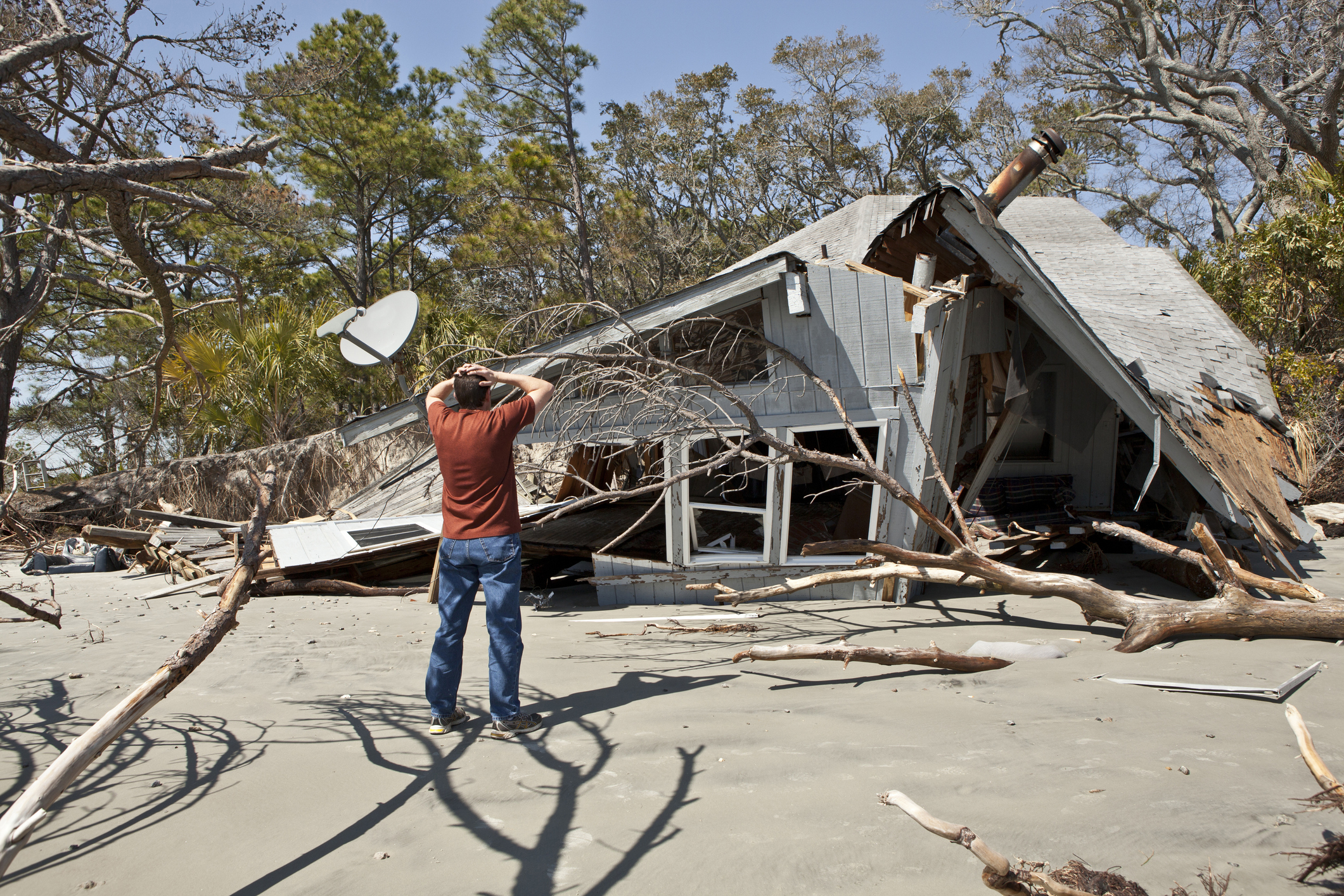 Hurricane Insurance Claims: 10 Things You Need to Know
Hurricane Insurance Claims: 10 Things You Need to KnowBecoming a Homeowner Hurricane damage? Know what your insurance will and won't cover to make the most of your policy if you need to file a claim.
By Kimberly Lankford
